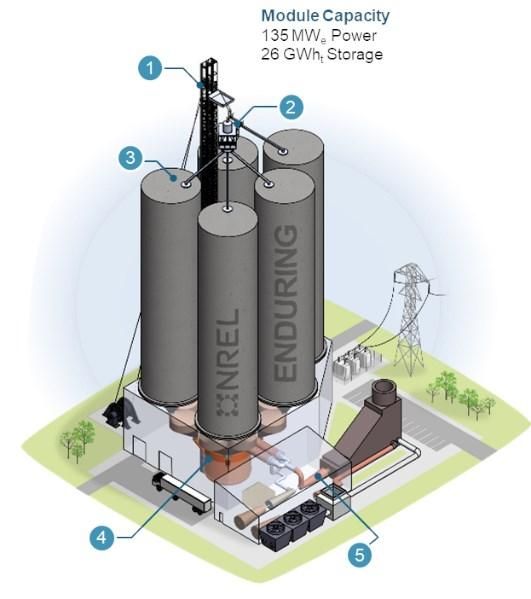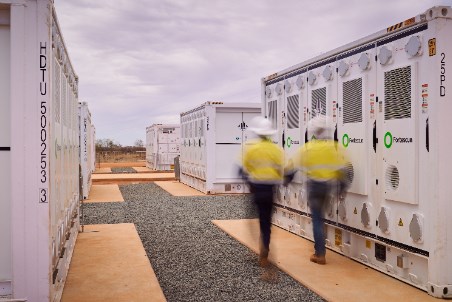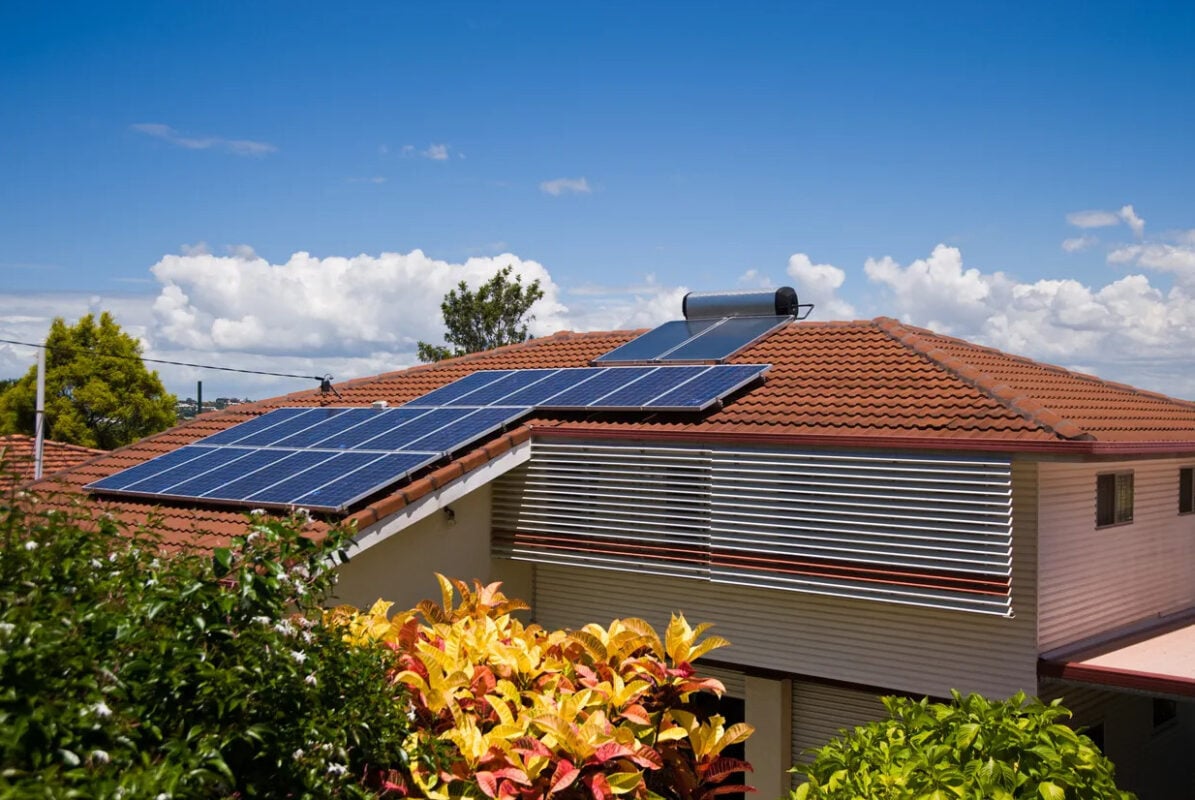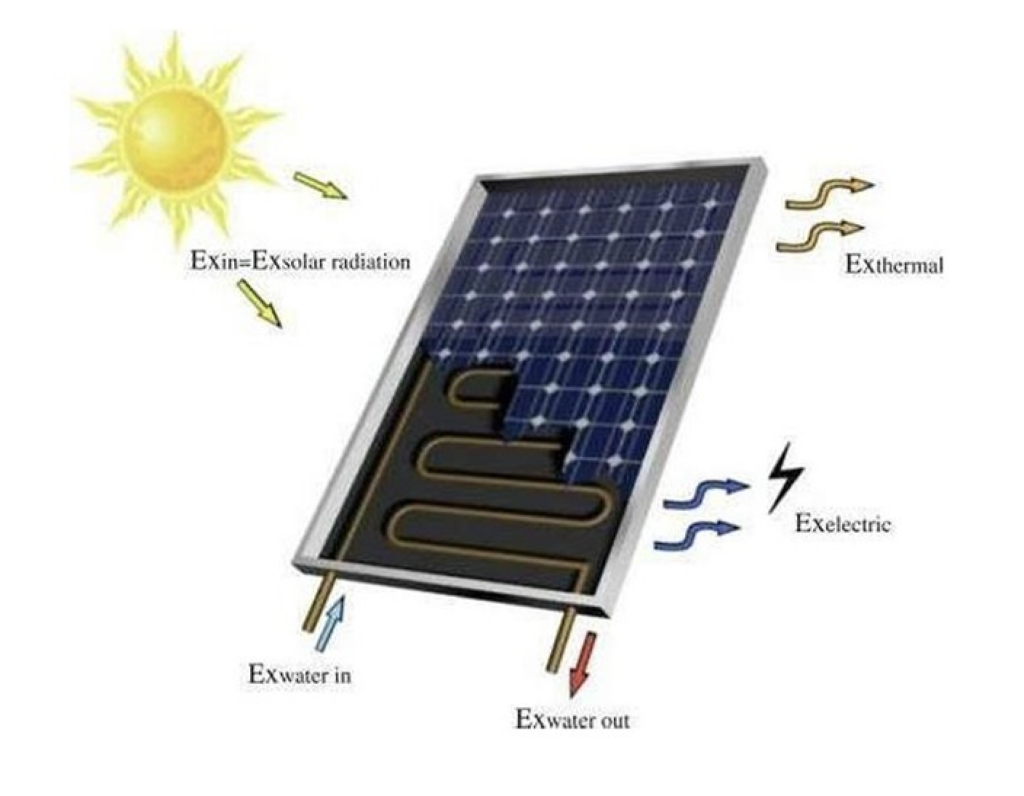Optimal distributed PV system assessment for renewable energy based microgrid application in Makkah, Saudi Arabia – Nature

Executive Summary
This report details an investigation into optimizing the energy system for the Makkah railway station, a large public infrastructure, to align with global and national sustainability targets. The study aims to identify a system that minimizes costs and environmental impact while ensuring energy reliability, directly contributing to the achievement of several Sustainable Development Goals (SDGs). Using Hybrid Optimization of Multiple Energy Resources (HOMER) software, two primary hybrid renewable configurations (PV/grid and PV/battery/grid) were analyzed against a grid-only baseline. The simulation results identify the grid-connected Photovoltaic (PV/grid) system as the most effective configuration. This system demonstrates significant progress towards key SDGs:
- SDG 7 (Affordable and Clean Energy): The system achieves a low Levelized Cost of Energy (LCOE) of 0.0755 USD/kWh and a renewable fraction of 26.7%, ensuring access to affordable and clean energy.
- SDG 13 (Climate Action): It facilitates a 26.72% reduction in Carbon Dioxide (CO₂) emissions compared to the baseline, taking urgent action to combat climate change.
- SDG 9 (Industry, Innovation, and Infrastructure): With a strong Internal Rate of Return (IRR) of 9.3% and a Net Present Cost (NPC) of 27.9 million USD, the system proves to be a financially sustainable model for resilient public infrastructure.
- SDG 11 (Sustainable Cities and Communities): The proposed solution provides a blueprint for making public transport hubs in cities more sustainable, particularly in solar-rich regions like Saudi Arabia.
The PV/grid system is recommended for high-load public facilities as a cost-effective and environmentally responsible solution that supports long-term sustainability initiatives such as Saudi Arabia’s Vision 2030.
Introduction: Aligning Energy Infrastructure with Sustainable Development Goals
The Imperative for Sustainable Energy in Saudi Arabia
The transition to hybrid renewable energy systems is critical for advancing global sustainability. In Saudi Arabia, the energy sector presents a significant challenge and opportunity for achieving the SDGs. The nation’s heavy reliance on fossil fuels, which generate over 90% of its electricity, is inconsistent with the objectives of SDG 7 (Affordable and Clean Energy) and SDG 13 (Climate Action). Despite possessing some of the world’s most abundant solar resources, with an annual solar radiation of approximately 2,200 kWh/m², renewable energy’s contribution remains minimal. This gap hinders progress towards decarbonization and exposes the economy to the volatility of fossil fuel markets. The national strategy, Vision 2030, recognizes this imperative and aims to diversify the energy portfolio, creating a pathway for significant growth in solar PV generation.
Study Objectives and Contribution to SDGs
This report aims to identify an optimal energy system configuration for the Makkah railway station that minimizes costs and environmental impact. By focusing on a high-demand public facility, this study provides a scalable model for developing sustainable infrastructure, directly supporting SDG 9 (Industry, Innovation, and Infrastructure) and SDG 11 (Sustainable Cities and Communities). The primary objective is to evaluate four potential systems (PV/grid, PV/battery/grid, battery/grid, and grid-only) based on their economic viability and their capacity to reduce CO₂ emissions. The analysis utilizes HOMER software to determine the most effective solution for advancing Saudi Arabia’s clean energy transition.
Literature Review: Global Progress Towards SDG 7 and SDG 13
Environmental and Operational Advantages of Distributed PV Systems
Distributed Photovoltaic (PV) systems are fundamental to achieving a global energy transition in line with the SDGs. By generating emission-free electricity at the point of consumption, these systems directly contribute to SDG 13 (Climate Action) by reducing greenhouse gas emissions and mitigating climate change. Furthermore, their decentralized nature enhances energy efficiency by minimizing transmission and distribution losses, a key aspect of building resilient and sustainable energy systems under SDG 7 and SDG 9. Localized generation improves grid flexibility, reduces peak demand, and increases energy resilience, which is particularly beneficial for critical public infrastructure.
Hybrid System Configurations and Global Experiences
To address the intermittency of solar power, hybrid systems combining PV with grid support or battery storage have become a primary focus of sustainable energy research. Global case studies demonstrate the effectiveness of various hybrid models in different contexts. Studies in Saudi Arabia have consistently shown that PV/grid systems offer superior economic and environmental performance compared to standalone or battery-inclusive configurations. While diesel generators can provide backup, their inclusion undermines sustainability goals by increasing emissions and operational costs. Experiences from Canada, Tanzania, and India confirm that optimized hybrid systems, tailored to local conditions, are critical for ensuring a reliable and cost-effective supply of clean energy.
The Saudi Arabian Context and Vision 2030
The case for hybrid PV systems in Saudi Arabia is exceptionally strong, given its high solar irradiance and the national commitment to decarbonization under Vision 2030. Techno-economic evaluations confirm that grid-connected PV systems can be cost-competitive with fossil fuels, offering a financially viable path to achieving SDG 7 and SDG 13. However, policy and regulatory barriers, such as the lack of feed-in tariffs and grid buyback mechanisms, currently limit widespread adoption. Overcoming these obstacles and fostering public and private investment are essential for unlocking the Kingdom’s vast renewable potential and transforming its energy landscape.
Methodology for Sustainable System Optimization
Optimization Process Using HOMER Software
To identify the optimal energy system, this study utilized the Hybrid Optimization of Multiple Energy Resources (HOMER) software. HOMER is a leading simulation tool for performing comprehensive techno-economic analyses of hybrid energy systems. It aligns with the principles of SDG 9 by applying innovative technology to design resilient and sustainable infrastructure. The software models thousands of system configurations to identify the most cost-effective solution based on key performance indicators, enabling informed decision-making that balances economic feasibility with environmental responsibility.
Key Input Parameters and Performance Metrics
The analysis was based on specific data for the Makkah railway station and its environment to ensure realistic and actionable results.
- Load Demand Data: The station’s peak load demand is 6.324 MW, with an average daily consumption of 78.316 MWh. This high and consistent demand profile makes it an ideal candidate for a hybrid energy solution.
- Solar Irradiance: The location receives an average daily solar radiation of 5.98 kWh/m², providing a reliable and abundant renewable resource for PV generation.
- Economic and Technical Metrics: The systems were evaluated against metrics crucial for assessing their contribution to the SDGs:
- Net Present Cost (NPC): To measure the overall lifetime cost and ensure economic sustainability.
- Levelized Cost of Energy (LCOE): To determine the cost-competitiveness of the generated electricity, supporting SDG 7.
- Renewable Fraction: To quantify the percentage of energy supplied by renewable sources.
- CO₂ Emissions: To measure the direct environmental impact and contribution to SDG 13.
Simulation Results: A Techno-Economic Analysis for Sustainable Infrastructure
Comparison of System Configurations
The HOMER simulation analyzed four distinct system configurations to determine the optimal path towards sustainable energy provision for the Makkah railway station.
- System 1 (PV/Grid): This configuration emerged as the optimal solution. It demonstrated the lowest NPC (27.9 million USD) and LCOE (0.0755 USD/kWh). With a 26.7% renewable fraction, it offers a balanced approach to integrating clean energy without compromising economic viability, making it a prime example of sustainable infrastructure under SDG 9.
- System 2 (PV/Battery/Grid): While viable, this system incurred a higher capital expenditure due to the inclusion of battery storage. Although it slightly increased the renewable fraction, the additional cost was not justified, making it a less attractive investment.
- System 3 (Grid Only): This baseline system had the highest operating costs and a 0% renewable contribution. Its complete reliance on fossil fuels is misaligned with SDG 7 and SDG 13 and exposes the facility to long-term price volatility.
- System 4 (Battery/Grid): This configuration was also financially unsustainable, with a high LCOE and no renewable energy contribution, making it an unsuitable option.
Performance Analysis of the Optimal PV/Grid System
The recommended PV/grid system is projected to generate approximately 29.71 GWh of electricity annually, with 26.7% of the station’s total energy consumption covered by solar power. The system’s output aligns well with the station’s daily load profile, reducing grid dependency during peak hours. PV generation is highest during the summer months (May to August), corresponding to periods of maximum solar irradiance. During winter, grid reliance increases, but the hybrid model ensures an uninterrupted power supply year-round. This balance between renewable generation and grid stability is essential for the reliable operation of critical public transport infrastructure, fulfilling a key tenet of SDG 11.
Financial and Environmental Impact Analysis
The financial model for the PV/grid system projects a payback period of approximately 9 years, after which it generates net financial returns. The initial capital expenditure is offset by long-term savings on electricity costs and low operational expenses. Environmentally, the system’s impact is significant. By reducing CO₂ emissions by 26.72%, it makes a tangible contribution to Saudi Arabia’s climate goals under Vision 2030 and supports global efforts under SDG 13 (Climate Action). This combination of economic viability and positive environmental impact underscores the system’s role as a model for sustainable development.
Sensitivity Analysis: Ensuring Robustness for Long-Term Sustainability
A sensitivity analysis was conducted to assess the system’s performance under fluctuating economic and environmental conditions, ensuring its long-term viability as a sustainable investment.
Impact of Grid Power Price Variation
Increases in grid electricity prices make the PV/grid system even more financially attractive, accelerating the adoption of renewable energy. Higher grid prices directly correlate with a higher renewable fraction as consumers and organizations seek more cost-effective alternatives, thereby advancing the goals of SDG 7.
Impact of PV Capital Cost Variation
The NPC of the system is directly proportional to the initial capital cost of the PV components. As global PV prices continue to decline, the economic feasibility of such projects will further improve. A decrease in capital cost encourages greater investment in solar capacity, leading to a higher renewable fraction and greater emissions reductions.
Impact of Annual Solar Radiation Variation
Higher annual solar radiation leads to increased energy generation, which in turn lowers the NPC and increases the renewable fraction. This inverse relationship highlights the inherent advantage of deploying PV systems in high-irradiance regions like Saudi Arabia, maximizing the efficiency and economic returns of clean energy infrastructure.
Conclusion and Recommendations for Advancing SDGs
Summary of Findings
This study confirms that a PV/Grid hybrid system is the optimal energy solution for the Makkah Railway Station. It provides the most balanced and effective approach to achieving cost-efficiency, operational reliability, and environmental sustainability. With an NPC of 27.9 million USD, an LCOE of 0.0755 USD/kWh, and a 26.72% reduction in CO₂ emissions, this configuration stands as a robust model for integrating renewable energy into high-load public infrastructure. Its strong financial indicators, including a 9.3% IRR, validate it as a sound and sustainable investment.
Practical Implications for Vision 2030 and Global Goals
The findings of this report have significant practical implications for policymakers and planners in Saudi Arabia and other nations pursuing sustainable development.
- Accelerating Vision 2030: The study provides a clear, data-driven blueprint for achieving the energy diversification and sustainability goals outlined in Vision 2030. It demonstrates how to leverage the Kingdom’s solar resources to power its growing infrastructure.
- Replicable Model for Sustainable Cities (SDG 11): The PV/Grid system can be replicated in other large public facilities, such as airports, hospitals, and industrial zones, contributing to the development of sustainable cities and communities.
- Promoting Clean Energy Investment (SDG 7): The proven cost-effectiveness of the system makes a compelling case for both public and private investment in renewable energy projects, helping to scale up clean energy access.
Recommendations for Future Research
To build upon this study and further accelerate the transition to sustainable energy, future research should focus on:
- Field-Based Validation: Deploying and monitoring a pilot system to validate the simulation results with real-world operational data.
- Smart Grid Integration: Investigating the integration of AI and machine learning algorithms for predictive load management and real-time energy dispatch to further optimize efficiency and cost savings.
- Policy and Regulatory Frameworks: Analyzing the impact of supportive policies, such as feed-in tariffs and net metering, on the financial viability and adoption rate of distributed PV systems.
Analysis of Sustainable Development Goals (SDGs)
1. Which SDGs are addressed or connected to the issues highlighted in the article?
The article addresses several Sustainable Development Goals (SDGs) by focusing on the transition to sustainable energy for large public infrastructure. The primary connections are to goals concerning clean energy, sustainable infrastructure, climate action, and sustainable economic models.
-
SDG 7: Affordable and Clean Energy
- The core of the article is about providing a reliable and cost-effective energy solution for the Makkah railway station by using renewable sources. It analyzes hybrid photovoltaic (PV) systems to ensure energy reliability (“0% unmet load”) while promoting clean energy (“renewable fraction of 26.7%”). The study’s focus on minimizing the Levelized Cost of Energy (LCOE) directly relates to the affordability aspect of this goal.
-
SDG 9: Industry, Innovation and Infrastructure
- The study focuses on upgrading the energy system of a “large public infrastructure,” specifically the Makkah railway station. By proposing an optimal PV/grid hybrid system, the article promotes the development of sustainable and resilient infrastructure (Target 9.1) and the adoption of clean technologies to make existing infrastructure more environmentally sound (Target 9.4).
-
SDG 11: Sustainable Cities and Communities
- The project is situated in the city of Makkah and aims to improve a key component of its public transport system. By reducing the carbon footprint of the railway station, the study contributes to making urban transport more sustainable, which is a key aspect of creating sustainable cities (Target 11.2).
-
SDG 13: Climate Action
- A primary objective of the proposed energy system is to mitigate environmental impact. The article explicitly states that the optimal PV/grid system leads to a “26.72% reduction in Carbon dioxide emissions (CO₂ emissions).” This directly addresses the need to take urgent action to combat climate change by reducing greenhouse gas emissions. The article also links this to national strategies like Saudi Arabia’s Vision 2030, aligning with the integration of climate measures into national policies (Target 13.2).
2. What specific targets under those SDGs can be identified based on the article’s content?
Based on the article’s discussion of renewable energy integration, infrastructure upgrades, and emissions reduction, the following specific SDG targets can be identified:
-
Target 7.2: By 2030, increase substantially the share of renewable energy in the global energy mix.
- The article directly supports this target by evaluating systems based on their “renewable fraction.” The recommended PV/grid system achieves a renewable fraction of 26.7%, contributing to an increased share of renewable energy in the local energy mix.
-
Target 9.1: Develop quality, reliable, sustainable and resilient infrastructure, including regional and transborder infrastructure, to support economic development and human well-being.
- The study aims to find an optimal energy system for the Makkah railway station that is reliable (ensuring “0% unmet load”), sustainable (using solar power), and financially viable (“IRR stood at 9.3%”), thus contributing to the development of resilient and sustainable public infrastructure.
-
Target 9.4: By 2030, upgrade infrastructure and retrofit industries to make them sustainable, with increased resource-use efficiency and greater adoption of clean and environmentally sound technologies.
- The research proposes retrofitting the energy supply of an existing major infrastructure with a clean technology (solar PV). The goal is to minimize environmental impact and improve efficiency, which aligns perfectly with this target.
-
Target 13.2: Integrate climate change measures into national policies, strategies and planning.
- The article mentions that “integration of renewable energy is essential to achieving long-term sustainability targets under initiatives such as Vision 2030.” This demonstrates how the project aligns with and supports the integration of climate action into Saudi Arabia’s national strategic planning.
3. Are there any indicators mentioned or implied in the article that can be used to measure progress towards the identified targets?
Yes, the article mentions several specific quantitative indicators that can be used to measure progress towards the identified targets. These metrics are central to the study’s analysis and conclusions.
-
Renewable Fraction (Indicator for Target 7.2)
- The article explicitly measures the “renewable fraction,” stating that the optimal PV/grid system “delivers a renewable fraction of 26.7%.” This directly corresponds to the official SDG indicator 7.2.1 (Renewable energy share in the total final energy consumption).
-
Reduction in Carbon Dioxide Emissions (Indicator for Target 9.4 and SDG 13)
- The study quantifies the environmental benefit by measuring the “reduction in Carbon dioxide emissions (CO₂ emissions).” The optimal system achieves a “26.72% reduction” compared to the grid-only baseline. This serves as a direct indicator of progress in making infrastructure more sustainable and combating climate change.
-
Levelized Cost of Energy (LCOE) (Indicator for SDG 7 – Affordability)
- The LCOE is a key metric used to determine the cost-effectiveness of the energy produced. The article identifies the optimal system as having an “LCOE of 0.0755 USD/kWh,” which is a clear indicator of the affordability of the clean energy solution.
-
Net Present Cost (NPC) and Internal Rate of Return (IRR) (Indicators for SDG 9 – Economic Viability)
- The article uses NPC (“27.9 million USD”) and IRR (“9.3%”) to assess the financial sustainability and economic feasibility of the infrastructure project. These financial metrics are crucial indicators for evaluating the viability of sustainable infrastructure investments.
-
Unmet Load (Indicator for Target 9.1 – Reliability)
- The analysis confirms that the proposed system “ensures 0% unmet load,” which is a direct indicator of the energy supply’s reliability, a critical requirement for quality infrastructure.
4. Summary Table of SDGs, Targets, and Indicators
| SDGs | Targets | Indicators |
|---|---|---|
| SDG 7: Affordable and Clean Energy | Target 7.2: Increase substantially the share of renewable energy in the global energy mix. |
|
| SDG 9: Industry, Innovation and Infrastructure |
Target 9.1: Develop quality, reliable, sustainable and resilient infrastructure.
Target 9.4: Upgrade infrastructure… to make them sustainable… with greater adoption of clean and environmentally sound technologies. |
|
| SDG 11: Sustainable Cities and Communities | Target 11.2: Provide access to safe, affordable, accessible and sustainable transport systems for all. |
|
| SDG 13: Climate Action | Target 13.2: Integrate climate change measures into national policies, strategies and planning. |
|
Source: nature.com
What is Your Reaction?
 Like
0
Like
0
 Dislike
0
Dislike
0
 Love
0
Love
0
 Funny
0
Funny
0
 Angry
0
Angry
0
 Sad
0
Sad
0
 Wow
0
Wow
0



















































.jpg.webp?itok=0ZsAnae9#)


























